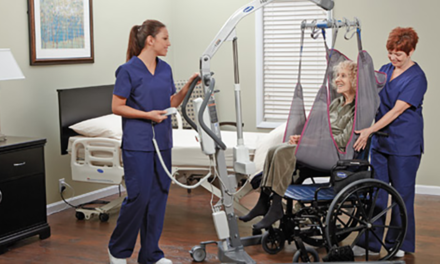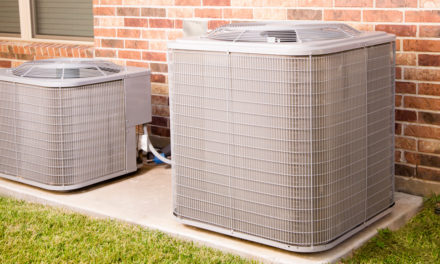Two years since the original Survey & Certification memorandum from CMS, much has been cultivated and authenticated in terms of reducing the risk of legionella in healthcare communities. Join us as we examine the latest research and preventive strategies to protect your residents.
How Did We Get Here? The Why Behind the CMS Mandate
Bill Pearson takes us on a brief history lesson as to what’s driving the increased regulatory focus from the Center for Medicare Services (CMS) since the highly reported 2015 New York City outbreak of legionella. We dive deep into the state’s quick focus and response as an example of how legionella treatment guidelines and regulations are developed.
A Rise in Incidents: The Center for Disease Control (CDC) Takes Center Stage
Due to increased focus and the recent release of the ASHRAE-188 Water Management guideline, the CDC breaks down complex engineering jargon into common language for all impacted facilities to review and create individual water management plans on their own. The CDC has been tracking incidents of legionella since before 2000, but the rate of increase has accelerated since 2007 and began to spread from our densely populated Eastern Seaboard to the Midwest to the West Coast.
Know Your Enemy: Understanding Legionella and Legionnaires’ Disease
You don’t need to be an epidemiologist or clinician to understand what this disease is. Who’s most at risk and why? While all of us are at risk of exposure, only 5% of the general population may be susceptible. Still, 25% of infections occur in otherwise healthy individuals.
Where Does Legionella Grow and Develop?
It’s important to understand your building’s water system, specifically where it enters, how it travels and potential areas where water can sit. These “dead legs” create heightened risk for bacteria or biofilm growth and need control measures to manage said risk.
What is a Water Management Plan (WMP) and Why Do I Need One?
Developed as a multi-step risk management tool, the ASHRAE-188 standard for WMPs was developed to help create an understanding of your community’s risks and control measures, provide visibility to your water management team, and assist in educating the team and your staff on your water management activities. CMS has mandated that each Skilled Nursing facility has a water management plan in place.
What’s the Standard on Legionella Testing? What Are the Risks of Not Testing?
In July 2018, CMS updated the standard in regards to legionella testing, leaving that decision up to the AHJ or organizations. However, it is a recommended part of the ASHRAE-188 guidelines. Continue on to 50:31 for a great viewer question on best practices for testing protocols.
Three Brief Stories: Lessons from the Trenches
What happens when legionella exhibits itself within your water system and/or a community acquired incident or outbreak occurs? What is the impact on staff, residents and the community itself? Even if you’ve done everything right, there is always a chance for legionella to exhibit. You stand to gain from the learnings of others as well. Be prepared, keep your staff informed and if the inevitable should occur, make sure everyone knows the Water Management team and who to contact for help.
What Happens When the State or Local AHJ/DOH Gets Involved?
It’s important to begin and maintain communication with the Department of Health (DOH) locally and, if required, ask that they or yourself engage the CDC for support. First, you’ll want to complete bulk water testing, sent to a CDC ELITE member lab for culturing. Once results are received, the DOH must be informed within 24 hours and remediation should begin as soon as possible. Prior to and after remediation, communication to all stakeholders should remain high.
Remediation is Done, but You’ve Only Just Begun…
Even though your potable water system has been treated, your DOH will require ongoing testing to prove legionella is in fact eradicated. Since you’re on water restrictions, you’ll want to evaluate the cost and effectiveness of point-of-use filters. Discover what to consider, manufacturer recommendations and how filters impact test results. Finally, learn the value of flushing your outlets and how to avoid biofilm from developing.
Is There a Trend to What Surveyors are Looking for Regarding a WMP?
There are several key areas highlighted by the CDC within an ASHRAE-188 compliant water management plan. Most importantly, it’s clear that these plans are intended as living, breathing documents that are updated as industry standards, your water system or infection prevention team changes. Secondly, it’s clear within the plan itself that verification of the plan is important, not just to surveyors but to the health of your building as well.
What Are My Options for Support? What Should I Consider Moving Forward?
Whether you already have a water management plan or are just getting acclimated to your building’s system, Direct Supply and TELS have solutions that can help. If you are a TELS Platform user, find resources in Training that may assist you in developing a community water management plan on your own. If your staff doesn’t have the time or experience for plan creation and management, testing or investigation/remediation services, trust the details to TELS Building Services. Visit TELS.net, email WaterManagement@TELS.net or call 888-433-3224 for helpful information.
To register for future webinars or for more information, visit https://www.directsupply.com/webinars/ or email webinars@directsupply.com




